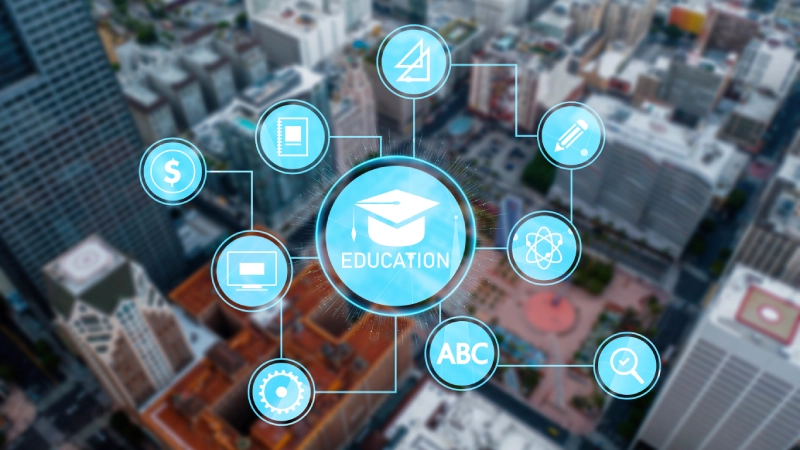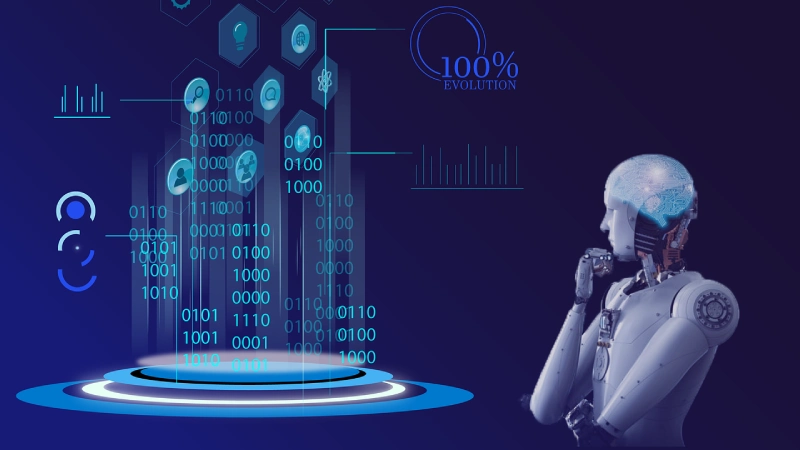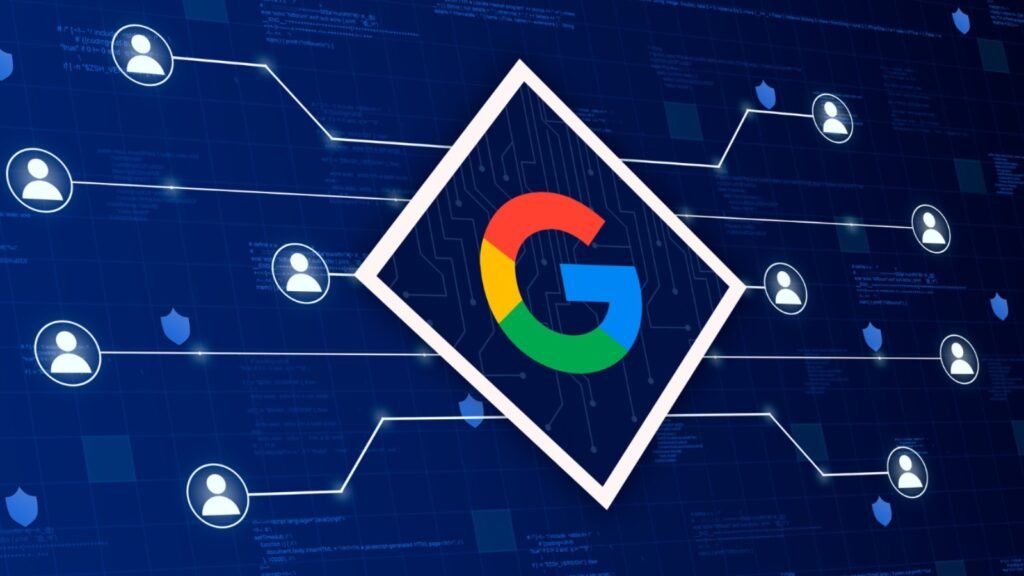Table of Contents
Highlights
- AI-powered adaptive learning has evolved from a niche innovation into a standard feature, making personalized learning accessible.
- Governments are moving from debating AI’s place to regulating its safe and responsible use.
- Challenges around equity, privacy, and long-term proof of effectiveness remain, but adaptive learning is now a core educational infrastructure.
In 2025, adaptive learning has officially crossed a major threshold. What was once a futuristic experiment, software that reshapes itself to fit each learner’s pace, style, and progress, has now become a major part of everyday life. Daily users now range in the millions, and often some do not even realize it. Anyone who has practiced a new language on an AI-powered app, joined a virtual tutoring session that adjusted in real time, or even watched a YouTube video with embedded comprehension checks has experienced adaptive learning in action. The technology has shifted from niche pilots and experimental classrooms to the mainstream, woven into the very platforms used by so many.
This shift is not just the result of smarter software. It has been propelled by rapid advances in artificial intelligence, especially models trained with education in mind, alongside government guidance that is finally catching up to technology’s pace. The combination of technical breakthroughs, scaled consumer adoption, and clearer rules has turned personalization from a buzzword to a baseline.

Why Adaptive Learning Tipped in 2025
Until most recently, adaptive leaning systems were relatively simple. Early versions mostly adjusted quiz difficulty or reordered practice questions. Useful, yes, but hardly revolutionary. The real tipping point came when generative AI models were fine-tuned for education. Instead of just responding with generic answers, these new systems can explain concepts, detect misconceptions, and guide students step by step in a way that feels more like a human tutor.
Google’s LearnLM is a defining example. Unlike general-purpose chatbots, LearnLM has been optimized specifically for teaching and learning. It is now appearing inside Google Classroom and even YouTube, where it can break down complex ideas and generate quiz questions within a video. This kind of native integration signals how adaptive AI is moving from side tools to core features.
Consumer learning applications have also played a central role in mainstream adaptive learning. Duolingo, already one of the most popular education platforms in the world, has embraced AI to power features like voice-based role play and AI-driven “video calls” that simulate real conversations. Instead of drilling vocabulary in isolation, learners can now practice natural speech with real-time corrections. Duolingo has reported measurable improvements in speaking outcomes for learners using these tools, highlighting how adaptivity is making a tangible difference in areas where traditional digital tools struggled.

Nonprofit platforms like Khan Academy are scaling too. Khanmigo, its AI-powered tutor, has been rolled out to millions of students worldwide. Teachers increasingly rely on it for planning lessons, generating practice sets, and supporting students in real time. While definitive research on long-term outcomes is still emerging, the sheer adoption numbers suggest that adaptive systems have found a lasting place in classrooms.
What Mainstream Adoption Looks Like
The phrase “adaptive learning has gone mainstream” does not mean that every student, everywhere, is using it equally. Rather, it means the technology is no longer a side experiment, it is integrated into the core workflows of schools, universities, and apps. governments are no longer debating whether AI belongs in education at all, but instead are setting guidelines for how it should be used.
In the United States, the Department of Education issued guidance clarifying that AI tools are permissible as long as they meet privacy protections and equity standards. They may sound bureaucratic, but it represents an important shift from ambiguity to official endorsement.
In the United Kingdom, a large number of teachers reported using AI by late 2024, mainly to create lesson plans and resources. The government has responded by launching training modules to help teachers use AI responsibly and effectively.
Europe has taken a more regulatory approach. The EU AI Act classifies most educational AI as “high-risk,” which means companies must meet strict requirements around transparency, safety, and bias testing before their tools can be deployed in schools.

In emerging economies such as India, adaptive platforms are being piloted in multiple languages to serve diverse student populations, reflecting a focus on inclusivity and scale. Meanwhile, in Australia, a government-backed AI assistant is being introduced in schools to reduce teacher workload, while in the United States, experimental private schools are testing AI-driven classrooms with minimal human teachers, raising both excitement and concern.
How Adaptive Systems Actually Work
The way adaptive learning works in 2025 is very different from a decade ago. Modern systems are no longer limited to text-based quizzes. They can interpret speech, handwriting, and even interactions with videos or diagrams. A student learning a foreign language might speak directly to an AI tutor and receive personalized feedback in real time, while a math student could sketch a problem and get hints tailored to their approach.
Adaptivity also now extends across the entire learning journey. Instead of only suggesting the “next question,” AI tutors can help plan lessons, guide classroom activities, and generate custom practice problems based on gaps in understanding. The models themselves have been tuned to behave more like good human teachers. Instead of simply giving away answers, they are trained to ask probing questions, offer hints, and scaffold solutions in ways that encourage deeper thinking.
Despite the excitement, it is important to be clear about the evidence. Rigorous, peer-reviewed research on large-scale impact is still limited. Early studies show that adaptive AI tools are particularly effective in narrow tasks such as writing feedback, language practice, and targeted math tutoring. For example, Duolingo’s early results with AI-powered voice practice suggest measurable improvements in speaking ability. Teachers report that tools save significant time by automating routine planning and grading, freeing them to focus on higher-value interactions with students.

What remains uncertain is the long-term effect on equity, motivation, and learning outcomes across diverse student groups. For now, most education experts advise a cautious but proactive stance: use adaptive tools in areas where they can clearly add value, collect data on their effectiveness, and be ready to adjust if outcomes do not match the hype.
Regulation and Guardrails
As adoption has accelerated, so too has regulation. Global organizations like UNESCO emphasize the need to keep humans at the center of learning, ensure teacher training, and safeguard against bias. The EU’s strict classification of education AI as high-risk requires companies to be transparent about how their systems work and prevent them from using unproven features like emotion detection. In the U.S. and U.K., guidance has focused more on practical safe-use principles, helping schools integrate AI tools without sacrificing privacy or accountability.
For technology watchers, these regulations matter beyond education. The policies being developed for adaptive learning may set important precedents for AI governance in other high-stakes fields, from healthcare to workplace training.
Seeking New Frontiers
While language learning has been the most visible success story, adaptive systems are now spreading into other areas. In STEM subjects, AI tutors are becoming more effective at spotting conceptual errors and helping students work through them step by step. In vocational and higher education, adaptive platforms are adjusting pacing and modality for learners balancing work and study.

Mainstream adoption does not mean the challenges are solved. Equity remains one of the biggest issues. Students without reliable internet access, personal devices, or quiet learning environments may be left behind, even as their peers benefit. Privacy is another concern: adaptive systems depend on large amounts of learner data, and there is an ongoing debate about how this data is stored, used, and shared. Finally, while usage statistics are impressive, genuine proof of learning outcomes requires more rigorous, long-term studies.
Several trends suggest where adaptive learning is headed next. One is multimodal mastery, where AI systems combine speech, writing, and visuals to build a richer understanding of how students learn. Another is platform integration: instead of requiring separate apps, adaptive features will increasingly be built into mainstream tools like Google Classroom, Microsoft Teams, and other core education software. Finally, regulation will continue to tighten, with procurement checklists that require transparency, bias audits, and evidence of real impacts. This will raise the bar for vendors and could help build trust among educators and parents.

From Hype to Infrastructure
In 2025, adaptive learning has moved well beyond hype. It is now a fundamental part of the learning landscape, embedded in consumer apps, classrooms, and workplace training programs. It has reached mainstream status not because the technology is flawless or universally proven, but because it is becoming infrastructure, meaning it is trusted, supported by policy, and increasingly expected by users.
The challenge now is to ensure that adaptive learning fulfills its promise. That means proving its impact with solid evidence, ensuring equitable access, and keeping teachers and human mentors at the heart of the process. if those pieces fall into place, adaptive learning could become one of the most important examples of how AI enhances, not replaces, human expertise in everyday life.